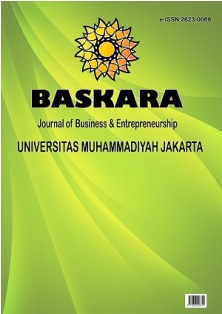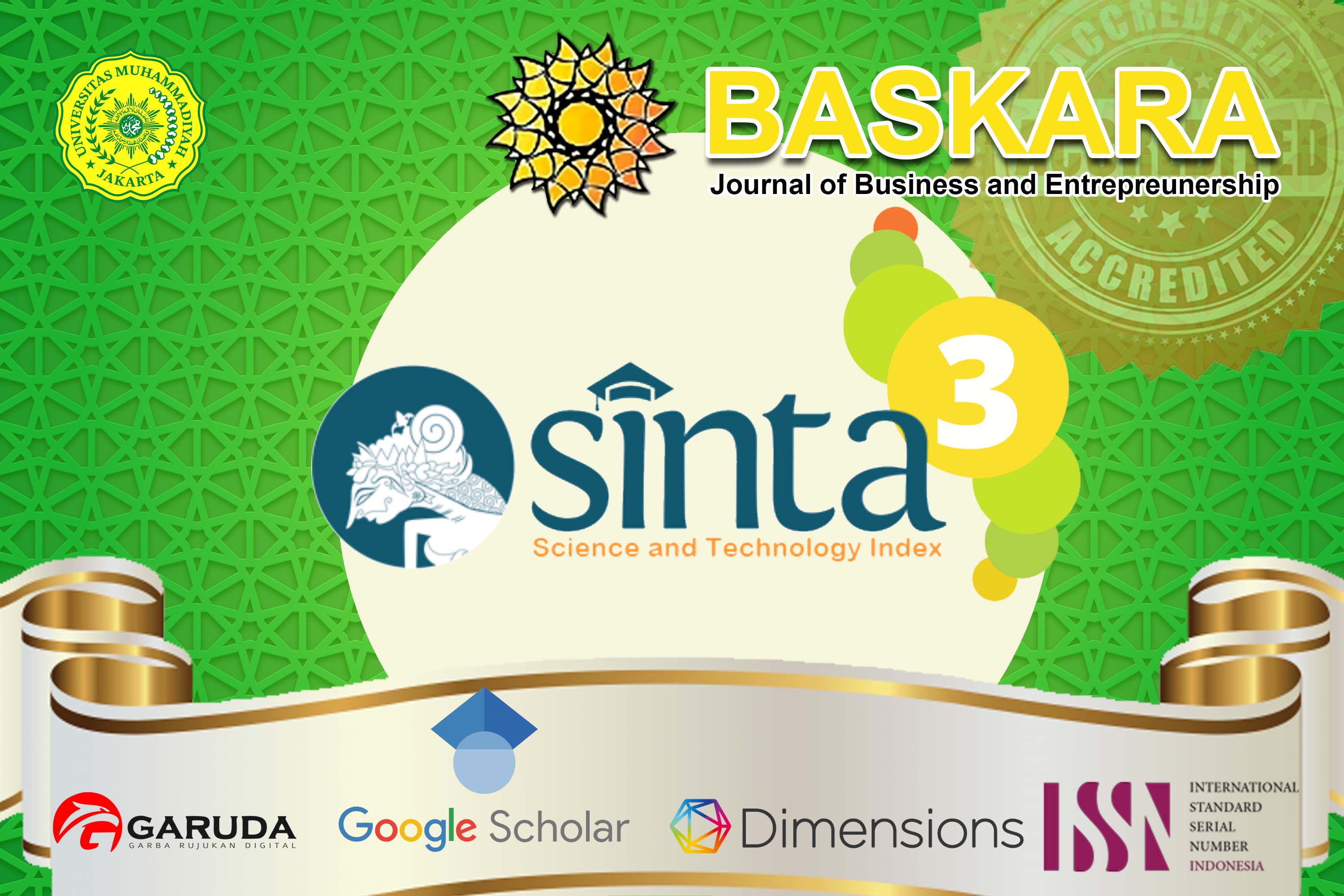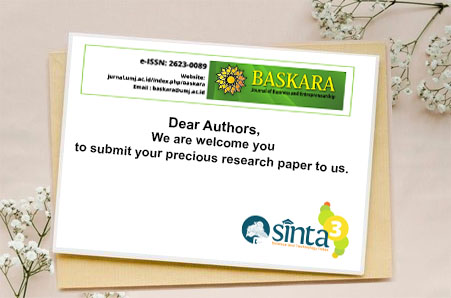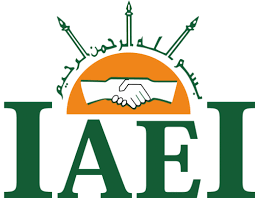Penerapan Design Thinking Pada Usaha Pengembangan Budi Daya Ikan Lele di Desa Pabuaran, Kecamatan Gunung Sindur, Kabupaten Bogor
DOI:
https://doi.org/10.54268/baskara.v2i1.6199Kata Kunci:
Budi Daya Ikan Lele, Design Thinking, UMKMAbstrak
Design thinking sebagai sebuah metode banyak digunakan oleh para ahli untuk mengembangkan usaha bisnis yang berbasis kepada feedback pengguna, teknologi dan solusi. Budi daya ikan lele adalah UMKM yang cukup popular di desa Pabuaran, Gunung Sindur Bogor. Pada akhir tahun 2018, terdapat pengadian masyarakat oleh mahasiswa UMJ dan Polytechnic Singapore di UMKM ini dengan menggunakan pendekatan design thinking dalam upaya menemukan solusi yang tepat untuk permasalahan yang dihadapi oleh para peternak ikan lele. Oleh karena itu, penelitian ini bertujuan untuk menguraikan setiap tahapan design thinking tersebut yang meliputi 5 tahapan: sense of sensibility, emphaty, ideation, prototype, dan test. Penelitian ini menggunakan pendekatan kualitatif dengan analisis-deskriptif. Hasil penelitian ini menunjukkan bahwa pelaksanaan tahapan design thinking yang dilakukan belum maksimal karena keterbatasan waktu KKN sehingga prototype yang dihasilkan tidak sampai dilakukan uji test terhadap pengguna. Walaupun demikian, penggunaan metode design thinking dalam KKN merupakan sebuah kemajuan yang perlu dilembagakan karena memiliki proses yang bertahap untuk memberikan sebuah solusi yang dihadapi oleh masyarakat.Referensi
Brown, Tim & Wyatt, Jocelyn. (2016). Design Thinking for Social Innovation, Switzerland: Springer International Publishing DOI 10.1007/978-3-319-26100-3
Fauzi, A. H., & Sukoco, I. (2019). Konsep Design Thinking pada Lembaga Bimbingan Belajar Smartnesia Educa. Organum: Jurnal Saintifik Manajemen dan Akuntansi, 2(1), 37-45. doi: https://doi.org/10.35138/organu m.v2i1.50
Hatton, D.D., Bailey, D.B., Burchinal, M., dan Ferrell, K.A. 1997. “Developmental growth curves of preschool children with vision impairments”. Child Development. Vol. 68 (5), pp: 788-806.
Lazuardi, M. L., & Sukoco, I. (2019). Design Thinking David Kelley & Tim Brown: Otak Dibalik Penciptaan Aplikasi Gojek. Organum: Jurnal Saintifik Manajemen dan Akuntansi, 2(1), 1-11. doi: https://doi.org/10.35138/organu m.v2i1.51
___________Design Thinking, 18 December 2017 https://sis.binus.ac.id/2017/12/18/design-thinking-2/
Suprobo, Priyo. 2012. Penerapan Design Thinking dalam Inovasi Pembelajaran Desain dan Arsitektur https://www.researchgate.net/publication/262561679
Modul Learning Express Foundation Training. 2018. Singapore Polyethnic
Laporan KKN Internasional, Proses Design Thinking pada Budi Daya Ikan Lele di Desa Pabuaran, Bogor, 2019, FISIP UMJ
##submission.downloads##
Diterbitkan
Terbitan
Bagian
Lisensi
In order for Baskara: Journal of Business and Entrepreneurship to publish and disseminate research articles, we need publishing rights (transfered from author(s) to publisher). This is determined by a publishing agreement between the Author(s) and Baskara Journal. This agreement deals with the transfer or license of the copyright of publishing to Baskara: Journal of Business and Entrepreneurship, while Authors still retain significant rights to use and share their own published articles. Baskara : Journal of Business and Entrepreneurship supports the need for authors to share, disseminate and maximize the impact of their research and these rights, in any databases.
As a journal Author, you have rights for a large range of uses of your article, including use by your employing institute or company. These Author rights can be exercised without the need to obtain specific permission. Authors publishing in Baskara : Journal of Business and Entrepreneurship have wide rights to use their works for teaching and scholarly purposes without needing to seek permission, including:
- use for classroom teaching by Author or Author's institution and presentation at a meeting or conference and distributing copies to attendees;
- use for internal training by author's company;
- distribution to colleagues for their reseearch use;
- use in a subsequent compilation of the author's works;
- inclusion in a thesis or dissertation;
- reuse of portions or extracts from the article in other works (with full acknowledgement of final article);
- preparation of derivative works (other than commercial purposes) (with full acknowledgement of final article);
- voluntary posting on open web sites operated by author or author’s institution for scholarly purposes.
Copyright Transfer Agreement for Publishing (Publishing Right)
The Authors who submit manuscript has to understand that if accepted for publication, mean that all copyright and publishing right of the article shall be assigned/transferred to Baskara: Journal of Business and Entrepreneurship as assigned publisher.
- CC BY-NC: This license allows reusers to distribute, remix, adapt, and build upon the material in any medium or format for noncommercial purposes only, and only so long as attribution is given to the creator.
It includes the following elements:
BY ![]() – Credit must be given to the creator
– Credit must be given to the creator
NC ![]() – Only noncommercial uses of the work are permitted
– Only noncommercial uses of the work are permitted
Baskara (C) Copyright (2022):
BASKARA: Journal of Business and Entrepreneurship by https://jurnal.umj.ac.id/index.php/baskara
is licensed under a Creative Commons Attribution-NonCommercial 4.0 International License








